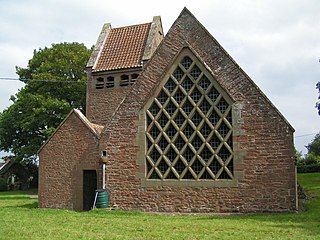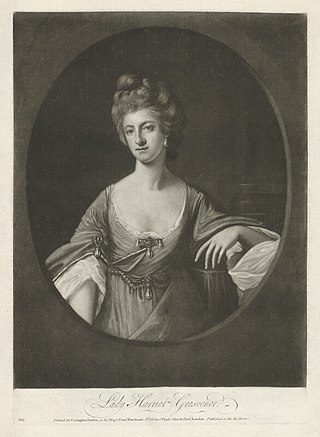
Lieutenant-Colonel Sir Archibald David Stirling, was a Scottish officer in the British Army and the founder and creator of the Special Air Service (SAS). Under his leadership, the SAS carried out hit-and-run raids behind the Axis lines of the North African campaign. He saw active service during the Second World War until he was captured in January 1943. He spent the rest of the war in captivity, despite making several attempts to escape.

George Edward Cole, OBE was an English actor whose career spanned 75 years. He was best known for playing Arthur Daley in the long-running ITV comedy-drama show Minder and Flash Harry in the early St Trinian's films.

Earl of Shaftesbury is a title in the Peerage of England. It was created in 1672 for Anthony Ashley-Cooper, 1st Baron Ashley, a prominent politician in the Cabal then dominating the policies of King Charles II. He had already succeeded his father as second Baronet of Rockbourne in 1631 and been created Baron Ashley, of Wimborne St Giles in the County of Dorset, in 1661, and he was made Baron Cooper, of Paulett in the County of Somerset, at the same time he was given the earldom.
Geraldine James OBE is an English actress. She has worked extensively on television, on stage and in film. She is known for her role as Marilla Cuthbert in the Netflix series Anne with an E (2017–2019) and as Queen Mary in the 2019 film Downton Abbey.

Cocktail Time is a comic novel by P. G. Wodehouse, first published in the United Kingdom on 20 June 1958 by Herbert Jenkins, London and in the United States on 24 July 1958 by Simon & Schuster, Inc., New York. A condensed version of the story was originally published in the Ladies' Home Journal (US) in one issue in April 1958. It is the third novel to feature Frederick Twistleton, Earl of Ickenham, better known as Uncle Fred.

The Invisible Man's Revenge is a 1944 American horror film directed by Ford Beebe and written by Bertram Millhauser. The film stars John Carradine as a scientist who tests his experiment on a psychiatric hospital escapee, played by Jon Hall, who takes the invisibility serum and then goes on a crime spree. The film was announced on June 10, 1943, and began shooting on January 10, 1944 finishing in mid-February. On its release, reviews in The New York Herald-Tribune, The New York Daily News and The New York World-Telegram noted that the film series and its special effects became tired, while a review in The Hollywood Reporter declared it as one of the best in the series. Although Hall’s character shares the name “Griffin” with characters in other Universal “invisible man” films, the film does not follow the continuity of the series.

Brocket Hall is a neo-classical country house set in a large park at the western side of the urban area of Welwyn Garden City in Hertfordshire, England. The estate is equipped with two golf courses and seven smaller listed buildings, apart from the main house. The freehold on the estate is held by the 3rd Baron Brocket. The house is Grade I-listed.

Scott Wilson Group plc was a global integrated design and engineering consultancy with its headquarters in the United Kingdom. Founded as a civil engineering firm in 1951, the company broadened its range of services through acquisitions. Scott Wilson offered consultancy and professional services in the railways, buildings and infrastructure, environment and natural resources and roads sectors, and at its peak employed 5,500 people in 80 offices worldwide. Scott Wilson became a public limited company in 2006, and in 2010 was purchased by URS Corporation that in turn was purchased by AECOM.
Help! I'm a Teenage Outlaw is a British television programme filmed in the Czech Republic and first aired on CITV. The show follows three hapless outlaws during the English Civil War, who are trying to bring justice back to the land. The programme is based on the classic children's novel, The Children of the New Forest by Frederick Marryat.

Garendon Hall was a country home near Shepshed, Leicestershire, England. It was demolished in 1964.

Albert Randall Wells (1877–1942) was an English Arts and Crafts architect, designer, craftsman and inventor.

Bella at Midnight is a fantasy novel for children by Diane Stanley. The story is based on the fairy tale Cinderella. It was first published in 2006.

Death in a White Tie is a detective novel by Ngaio Marsh. It is the seventh novel to feature Roderick Alleyn, and was first published in 1938. The plot concerns the murder of a British lord after a party.

Sir Thomas Gorges of Longford Castle in Wiltshire, was a courtier and Groom of the Chamber to Queen Elizabeth I. Via his great-grandmother Lady Anne Howard, a daughter of John Howard, 1st Duke of Norfolk, he was a second cousin of both Queens Anne Boleyn and Catherine Howard, the second and fifth wives of King Henry VIII. In 1586 he was elected as a Member of Parliament for Downton in Wiltshire.

Thomas Ridley Sharpe was an English satirical novelist, best known for his Wilt series, as well as Porterhouse Blue and Blott on the Landscape, all three of which were adapted for television.

Florence, Lady Baker, or Florence Barbara Marie Finnian: or Florica Maria Sas; or Maria Freiin von Sas; or Barbara Maria Szász was a Hungarian-born British explorer. Born in Transylvania, she became an orphan when her parents and brother were murdered by the Romanian marauders led by Ioan Axente Sever and Simion Prodan who killed approximately 1000 predominantly Hungarian civilians in Nagyenyed on 8–9 January, 1849. She fled with the remains of the Hungarian army to the Ottoman Empire, to Vidin. Here she disappeared as child only to be seen in 1859 by Samuel Baker who rescued her. While Baker was visiting the Duke of Atholl on his shooting estate in Scotland, he befriended Maharaja Duleep Singh and in 1858–1859, the two partnered an extensive hunting trip in central Europe and the Balkans, via Frankfurt, Berlin, Vienna and Budapest. On the last part of the voyage, Baker and the Maharajah hired a wooden boat in Budapest, which was eventually abandoned on the frozen Danube. The two continued into Vidin where, to amuse the Maharajah, Baker went to the Vidin slave market. There, Baker fell in love with a white slave girl, Florence, destined for the Ottoman Pasha of Vidin. He was outbid by the Pasha but bribed the girl's attendants and they ran away in a carriage together and eventually she became his lover and wife and accompanied him everywhere he journeyed. They are reported to have married, most probably in Bucharest, before going to Dubrushka, but Sir Samuel certainly promised that they would go through another ceremony on their return to England – where they had a family wedding in 1865.

Blott on the Landscape is a 1985 BBC TV series, adapted by Malcolm Bradbury from the 1975 Tom Sharpe novel of the same name. It was broadcast on BBC2 in six episodes of 50 minutes each between 6 February and 13 March 1985.
The Haunted Tower is an opera composed by Stephen Storace to a libretto by James Cobb. It was first performed in London at the Theatre Royal, Drury Lane on 24 November 1789. It was one of Storace's more popular works, remaining among Drury Lane's repertoire for 30 years. The printed vocal score went through five editions, attesting to its popularity.

Henrietta de Hochepied, Baroness de Hochepied was an English aristocrat, socialite, and courtesan.
















